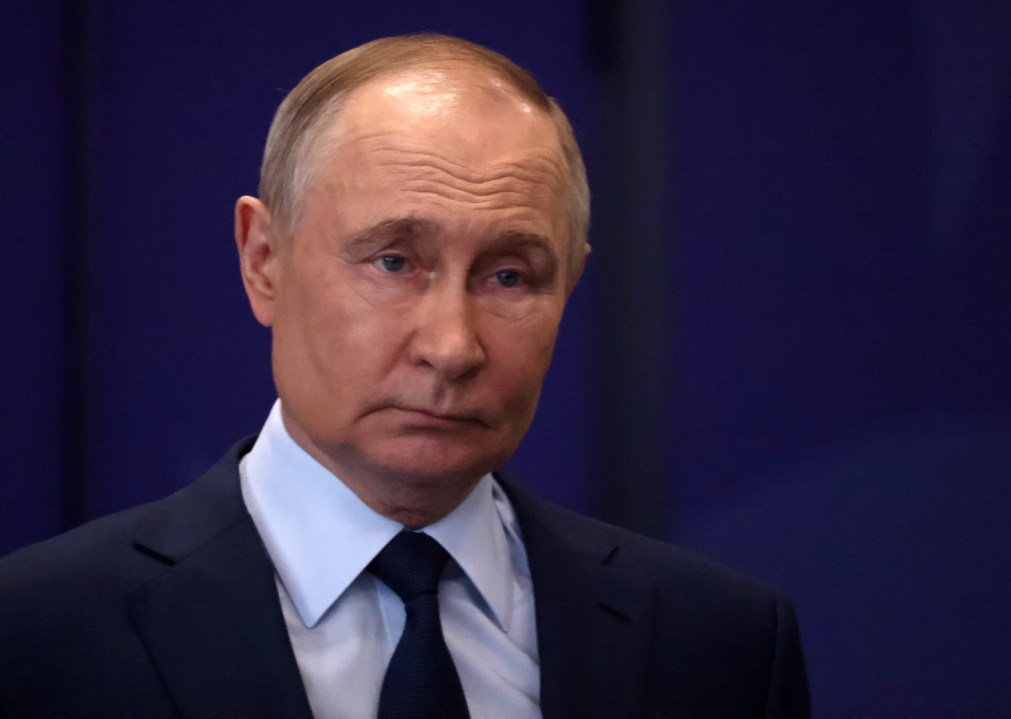At 4 p.m. UK time today, Russian troops were instructed to temporarily lay down their weapons in Ukraine. The order, issued by Russian president Vladimir Putin to mark the Easter weekend, is nominally in force for 30 hours until midnight on Easter Monday. ‘We are proceeding on the assumption that the Ukrainian side will follow our example,’ he said. All military operations, the President added, would supposedly be halted during that time period.
From Putin’s statement it doesn’t look as if this ceasefire was discussed with his Ukrainian counterpart Volodymyr Zelensky, or anyone from his administration, before he announced it. But it appears that for the rest of this weekend – maybe, just maybe – quiet will reign on the battlefields of Ukraine.
But as those who have followed Putin’s war in Ukraine closely, what he says and then does are two entirely different things. The Russian President has form for declaring – and then breaking – ceasefires in this war. In January 2023, Putin announced a 36-hour truce to mark Orthodox Christmas, which the Russian armed forces broke in less than a day. At the time, Zelensky dismissed Putin’s truce as an attempt to stop the Ukrainian army making advances in the Donbas.
A 30-day partial ceasefire on energy infrastructure, brokered by the American administration of Donald Trump last month and agreed to by the Ukrainians, received similar short shrift from the Kremlin. Despite nominally agreeing to it, Putin has repeatedly been accused by Zelensky of breaching it almost as soon as the truce was struck. It would be unwise, then, to believe that this time around the Russian President’s intentions are any purer.
Why, then, has Putin chosen now to declare a pause in the fighting? After all, circumstances now are very different to what they were over two years ago. For one, it is now the Ukrainian armed forces who are on the back foot, struggling to prevent the Russians making slow, grinding gains in the east of the country. Additionally, the Russian President appears to have the upper hand in the pre-ceasefire negotiations being brokered by Trump, who has been desperate to orchestrate a permanent end to the fighting from the moment he re-entered the White House back in January. Without seemingly much persuasion from the Russian President, Trump’s top team appear to have already signalled willingness to concede to key demands of his for ending the conflict, including barring Ukraine from Nato and recognising illegally annexed territory as Russian. CNN reported this weekend that the US is apparently prepared to recognise Crimea as Moscow’s territory as part of an agreement to end the war.
It seems, however, that the root of why Putin has chosen this moment does in fact lie in his fledgling relationship with this second iteration of Trump’s administration. It has been known for a month or so that the American President has held hopes of forcing Ukraine and Russia into striking a permanent ceasefire by this weekend – a move that would have held a nice symbolism for the President who had originally promised to bring an end to the war in ‘24 hours’.
When it became increasingly clear that this wasn’t going to happen, the White House’s unofficial deadline shifted to the end of April. With maximum efforts exerted to bully Kyiv in complying with this (e.g. the infamous Oval Office showdown between Trump, his VP J.D. Vance and Zelensky at the end of February), the sole remaining obstacle to achieving this has for a while now been Putin.
A small clue that this might be what Putin is thinking came in his announcement
With April sliding away, and his deputies returning from yet more meetings with the Russians empty-handed, Trump has not shied away from voicing increasing impatience with the Kremlin’s foot dragging on even moving an inch closer to agreeing to end the fighting on anything other than Putin’s maximalist terms. Trump has at varying points signalled that he would be prepared to walk away from trying to negotiate a ceasefire between Kyiv and Moscow (a scenario that would undoubtedly benefit the latter more than the former) or else crack down hard on Russia with fresh, potentially economically crippling sanctions. This unpredictability, a Trump USP, will undoubtedly have factored into Putin’s decision-making today.
A small clue that this might be what Putin is thinking came in his announcement: ‘Our troops must be ready to repel any violations of the truce and provocations from the enemy.’ It’s not beyond the realms of possibility that Russian troops may stage some kind of false flag attack over the coming days for which they then lay blame at Kyiv’s door for.
Viewed in this context, then, Putin’s declaration today of a 30-hour ceasefire seems little more than a play for time; a piece of red meat flung to Trump’s top team in an apparent show of good faith that in reality has little substance to it. By stringing the White House along with this demonstration of how the Kremlin can, apparently, play nice, Putin’s hope will be that most likely when the truce breaks down, Trump will once again blame Ukraine, and not Russia. With the American President’s record for parroting Russian propaganda points, sometimes almost word for word, there’s a fair chance Putin’s gamble would pay off.









Comments